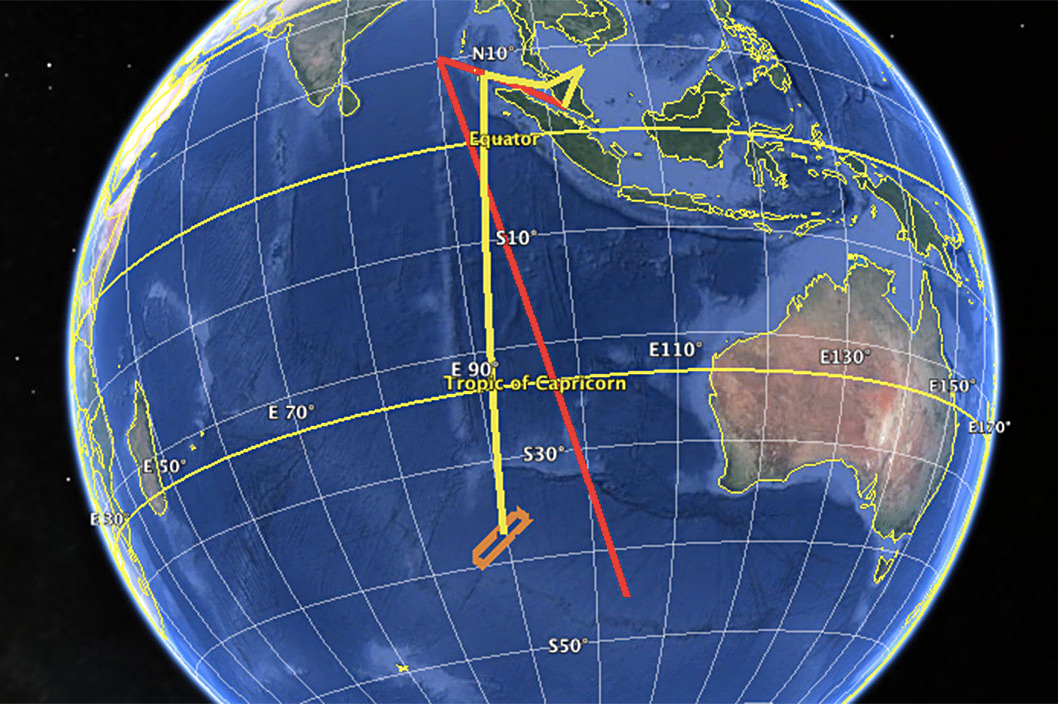Z aharie Ahmad Shah was the captain of the Boeing 777-200ER aircraft which operated as Malaysia Airlines flight 370 when it disappeared early in the morning on Saturday, March 8, 2014 somewhere over the Gulf of Thailand as it was carrying 227 passengers and 12 members of the flight crew from Kuala Lumpur to Beijing.
No one survived the demise of the aircraft, whose parts have been sporadically found — but that demise might have not been an accident.
Was a Suicidal Pilot the Cause of the Crash of Malaysia Airlines Flight 370?
Zaharie may have engaged in an act of mass murder-suicide which he had been meticulously planning for weeks prior to the incident, according to this article written by Jeff Wise of Daily Intelligencer for New York magazine, which has obtained a confidential document from the police investigation in Malaysia into the mysterious disappearance of the airplane. He allegedly “conducted a simulated flight deep into the remote southern Indian Ocean less than a month before the plane vanished under uncannily similar circumstances. The revelation, which Malaysia withheld from a lengthy public report on the investigation, is the strongest evidence yet that Zaharie made off with the plane in a premeditated act of mass murder-suicide.”
As of now, 42,000 square miles of the southern Indian Ocean have been covered at a cost of greater than $130 million — with another 4,000 square miles still yet to go — and the mysteries concerning the disappearance still have not been definitively solved.
If True, Zaharie is Not the First Suicidal Pilot
Andreas Lubitz allegedly wanted to intentionally destroy the Airbus A320-211 aircraft operating as Germanwings flight 4U-9525 — which was carrying 144 passengers and six members of the flight crew from Barcelona to Dusseldorf but crashed in a mountainous area of southern France at approximately 11:20 in the morning on Tuesday, March 24, 2015, leaving no survivors — by purposely initiating a descent which lasted for eight minutes before the airplane crashed in the French Alps and disintegrated into hundreds of small pieces.
As the co-pilot of the flight, Lubitz — who was 28 years old — purposely locked the door to the cockpit shortly after the aircraft reached its cruising altitude of 38,000 feet and after the pilot left the cockpit, leaving Lubitz alone to pilot the airplane and allegedly intentionally caused it to crash.
Possible Ways to Prevent Suicidal Pilots From Entering the Flight Deck
As a layperson when it comes to commercial aviation, I would like to initiate a discussion here. Perhaps I am wrong; but maybe the following changes need to be considered:
- In addition to the rigorous training and intense refresher courses through which pilots are regularly required to undertake in order to remain a pilot; perhaps there needs to be an increase in periodic psychiatric evaluations and a review of the current situations of pilots which could potentially affect their performance while on duty — but that could open the door to invasion of privacy and impede upon their rights.
- Cockpit personnel need to have a way to unlock a cockpit door from the outside — although that would not address a situation where a pilot is purposely attempting to keep a potentially rogue pilot out of the cockpit.
- Assuming that the pilot left the aircraft before using the lavatory aboard the aircraft, it might have been done too soon after departure. Pilots need to do whatever they can to at least ensure that they stay in the cockpit as long as possible while ensuring they get as much rest as they can during the flight; and one of those measures could be using a toilet in the airport as close to departure time of the aircraft as possible.
Summary
The possibility of being a passenger aboard a doomed airplane as the result of a suicidal pilot is quite remote at best — as with the possibility of terrorists bringing down an airplane — but to now have at least two possible cases involving commercial flights within 17 months is a cause for concern.
An immense amount of trust is placed on airlines every day by their passengers, employees and stakeholders — and pilots are a key part. Even the perception of abuse or negligence of that trust could cause potential passengers to be hesitant to patronize an airline with their business.
We can say that pilots such as Zaharie Ahmad Shah and Andreas Lubitz are an unusual anomaly in aviation when you realize that these incidents occurred after many thousands of successfully completed flights. Although investigations were conducted, we may never fully know what caused Zaharie and Lubitz to commit such senseless, thoughtless and foolish acts; but if they really wanted to commit suicide, they could have succeeded without involving 387 other innocent people who were completely unaware of the fate he supposedly had in store for them — as well as involve the time and energy of thousands of people in search and rescue efforts…
…but there are so many questions which have still not been definitively answered — two of which are:
- What measures — if any — do you think could be implemented to prevent unfortunate incidents similar to these two in the future?
- How could these incidents affect the future of commercial aviation, if at all?
Source: New York magazine.
